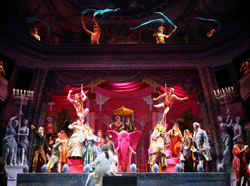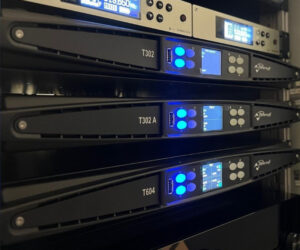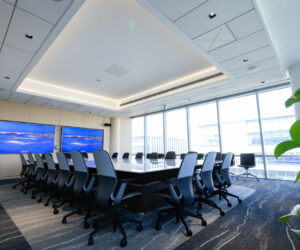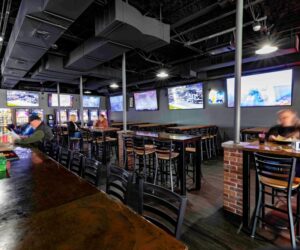Classical music recording and production company Soundmirror took the new Lectrosonics Digital Hybrid Wireless bodypack LT transmitters straight from the production line to the stage earlier this year to capture L.A. Opera’s West Coast premiere of The Ghosts of Versailles.
Soundmirror utilized 13 of the new L Series Large Bandwidth transmitters in combination with 11 Lectrosonics SMQV transmitters and 4 six-channel Venue receivers for a total of 24 channels of wireless to record composer John Corigliano’s opera, which was being fully staged in the U.S. for the first time in two decades.
“We got the first 13 LTs ever straight off the production line,” confirmed John Newton, who founded Soundmirror in Boston, MA in 1972 to provide digital recording services to the major record labels.
Newton had no concerns about putting the first production models straight into service, he said: “We have used Lectrosonics products so much over the years that we know that the reliability and ease of use is there. Sound Mirror is known for being an innovator, and our clients want the very best. Lectrosonics equipment sounds good and is of the quality that we require.”
Soundmirror’s veteran Grammy Award-winning team capturing the production at the Dorothy Chandler Pavilion, part of the four-venue Music Center campus in downtown Los Angeles, included producer Blanton Alspaugh, recording engineer Mark Donahue and Massachusetts-based independent wireless specialist David Williams.
Operating out of a temporary control room at the venue, the team recorded three of the six performances of The Ghosts of Versailles, which was being produced in repertory with The Barber of Seville and The Marriage of Figaro, the two classic “Figaro” operas that inspired it.
The 24 channels of Lectrosonics Digital Hybrid Wireless were paired with DPA 4071 lavalier microphones, positioned at each performer’s wigline.
“The 24 wireless got paired up with another 30-something Schoeps mics in the orchestra pit, and 15 or so mics on the stage and buried in the set,” reported Donahue.
A total of 80 tracks passed through Merging Technologies Horus interfaces to a SmartAV Tango control surface then into redundant Merging Pyramix DAWs, with a laptop for back-up, recording at 192 kHz.
“My job, when I’m mixing, is to mix the wireless,” said Donahue. “I have my 24 wireless mics and I have eight channels of VCAs if I have to rebalance the orchestra. I don’t pan the wireless mics—they all go into the center and support the zone mics to add a little bit of dialogue clarity. As Blanton is listening for audio quality issues and marking the score he’s also giving me on/off cues when people leave the scene and come back.”
The ability of the new LT to tune to as many as 3,072 selectable frequencies across a 75 MHz range—three standard Lectrosonics blocks—allowed Williams to successfully navigate the hostile RF environment in downtown L.A. “It was really nice to have the LT,” said Williams, who initially planned to evenly distribute the 24 channels across three Lectrosonics blocks before discovering that there was no space available in block 23. That necessitated squeezing 10 channels into block 22, he said. “The SMQVs are locked into a block, but the LTs have that three-block range,” which enabled them to be tuned to fit into the available frequency spectrum.
“Lectrosonics’ sound quality has always been superior, the reliability has been great and the cost is reasonable,” adds Donahue. “They were also the first to wade into the digital hybrid market, which gave us more channels with greater fidelity. You factor in all those things, and how many channels you need, and Lectrosonics really does rise to the top.”
Soundmirror’s orchestral, solo; opera and chamber recordings have received over 80 Grammy Award nominations, with the company’s staff collectively winning 25 Grammys. John Newton has won seven Grammy Awards, Blanton Alspaugh is a four-time Grammy Award-winner, including one for Producer of the Year, Classical in 2012, and Mark Donahue has five Grammy Awards to his credit.





















